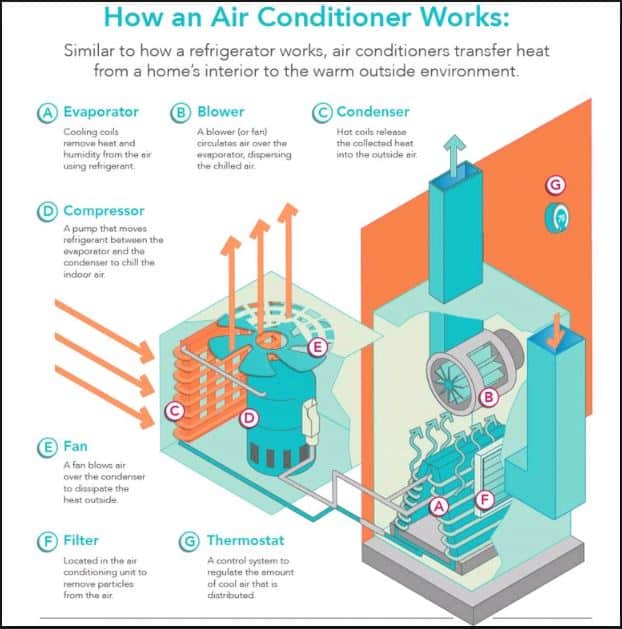Today
15°
Sat
18°
Sun
18°
Mon
18°
Tue
18°
Wed
17°
How does air conditioning work? A simple breakdown.
Wednesday, 7th February, 2018
According to the Australian Bureau of Statistics, almost half of Australian households use reverse cycle air conditioning as their main system of cooling.
But, do you know how an air conditioning unit works? Let us break it down for you.
Air conditioners use refrigeration to cool the air indoors through a physical law: when a liquid converts to a gas, it absorbs heat. This process is known as phase conversion. Air conditioning systems take advantage of this by forcing refrigerant compounds to evaporate and condense repeatedly in a closed system of coils.
The basics:
- The air conditioner sucks in warm air from inside the room through a filter.
- This warm air flows over a set of coils which contains the cold refrigerant. As the air flows over the coils, the fluid becomes hotter while the air becomes colder.
- A big fan then blows the air back into the room. Over time, this cycle will cool the room to your desired temperature.
- The refrigerant fluid which made the air colder, but absorbed all the heat, now has to be cooled down again. It flows through the compressor and the pressure is increased, and then cooled down through the condenser unit.
- Now the gas repeats its cycle to cool again.
- Reverse cycle systems do the above in opposite gas flow.
The four major components of an air conditioning unit manage the refrigerant and circulate the air:
- Evaporator – receives the liquid refrigerant where it evaporates. Cooling coils remove the heat and humidity from the air using the refrigerant.
- Condenser – facilitates the heat transfer by condensing the gas back to liquid form. Hot coils release the collected heat into the outside air.
- Expansion valve – regulates the flow of refrigerant to the evaporator.
- Compressor – pressurises the refrigerant. Acts as a pump that moves the refrigerant between the evaporator and the condenser to chill indoor air.

The cold side of an air conditioner (inside) contains the evaporator and a fan to blow air over the chilled coils and into the room. The hot side (outside) contains the compressor, condenser and another fan to vent the hot air from the compressed refrigerant to the outdoors. Between the two sets of coils, the expansion valve regulates the amount of compressed refrigerant moving to the evaporator.
Share
Categories







